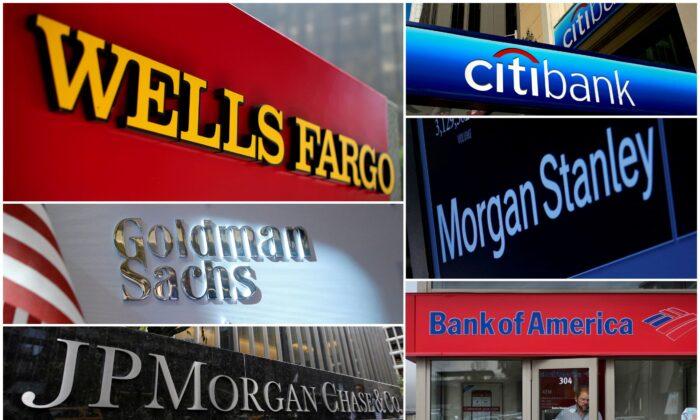Major U.S. banks are seeing operating expenses rise as employee wages, along with bonuses and compensation, go up in a tight Omicron-tainted labor market in which companies are struggling to hire and retain workers.
“There is real wage inflation everywhere in the economy, everywhere,” Goldman Sachs CEO David Solomon said on a Jan. 18 conference call with analysts.
With almost $4 trillion in assets under management, JPMorgan Chase, one of the United States’ biggest banks, is seeing performance-based pays swell in divisions such as investment banking, trading, and asset management.
“There’s a lot more compensation for top bankers and traders and managers who I should say did an extraordinary job in the last couple years,” CEO Jamie Dimon told analysts during a conference call. “We will be competitive in pay. If that squeezes margins a little bit for shareholders, so be it.”
Dimon said that wages, alongside other expenses such as housing and oil, will sustain their upward momentum this year while the Fed starts to raise interest rates and try to rein in inflation.
“I think wages going up is a good thing for the people who have the wages going up,” Dimon added. “CEOs shouldn’t be crybabies about it. They should just deal with it. The job is to serve your client as best you can with all the factors out there.”
Even though analysts predict a return to normalcy this year, operating expenses aren’t expected to cool down any time soon.
“Supply chain pressure could moderate, but a continued rise in wage costs and slowing macro conditions will likely weigh on margins. We see risk to consensus margin expectations in 2022,” Savita Subramanian, head of U.S. equity and quantitative strategy at Bank of America Global Research, wrote in an earnings-tracker note.
The share prices of JPMorgan and Citigroup fell on Jan. 14 following the banks posting higher costs for 2021 with more inflationary pressures, including employee wages, anticipated this year.
Banks typically expand their revenues when interest rates go up, but the recent inflation is threatening to diminish that advantage. The central bank is tapering its bond purchases and planning to hike rates in early spring.
Pandemic-related constraints have forced banks to pay more to front-line retail employees. Bank of America increased its minimum wage to $21 in October 2021, while Wells Fargo raised it to $18 to $22, depending on branch location.
In the face of worker shortages, there is increasing competition among the major banks to get their hands on top talent and retain them, which is good news for high performers who can command premium rates.





